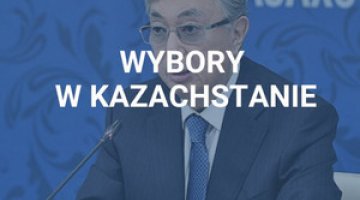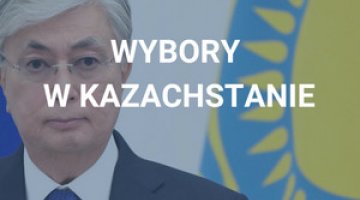Kazakhstan: work starts on dismantling the Nazarbayev system
On 19 January, the state of emergency introduced in Kazakhstan two weeks earlier in connection with the mass riots (at first in the west of the country and then also in other centres, especially in the former capital of Almaty) expired (see ‘Protests escalating in Kazakhstan’). At the same time, the contingent of armed forces sent to the country at the government’s request as part of the so-called anti-terrorist operation of the Collective Security Treaty Organisation (CSTO; the first troops arrived on 6 January, see ‘Kazakhstan: the CSTO intervenes, the protests pacified’) has withdrawn. In recent days, the government has also taken a number of steps to deprive the former president Nursultan Nazarbayev of the formal titles that would have allowed him to influence the situation in the country; for example, on 19 January the Mazhilis (the lower house of parliament) adopted amendments revoking his lifetime presidency of the Security Council (the current president Kassym-Jomart Tokayev dismissed him from this function and took his place on 5 January). This move has been accompanied by the dismissal of people associated with the first president: the until now head of the National Security Committee (NSC) and former Prime Minister Karim Massimov was dismissed and then arrested; his deputy (Samat Abish, Nazarbayev’s nephew) and many executives in the oil sector have also been sacked.
Commentary
- According to official data, 227 people were killed in the incidents in Kazakhstan, including 19 members of the law enforcement agencies. Everything indicates that the protests were initially spontaneous and limited in nature. The disturbances were triggered by the almost doubling of LPG prices on 1 January, which catalysed years of discontent over corruption and the low (in relation to the aspirations cultivated among the people) standard of living. The protest movement did not generate any clear leaders, and its political demands were limited to calling for the resignation of the government (including Nazarbayev). After the protests spread throughout the country, they quickly turned into riots (clashes with the police, the storming of public administration buildings, the looting of shopping malls). The NSC, which was run by people linked to the former president, played an unclear role in these events. According to one version, which is difficult to confirm but credible, in many cases the officers of the Committee behaved in a manner which could be described as at least passive. The alleged aim was to show that the authorities were not in control of the situation, thereby strengthening the position of the old Nazarbayev elite. Tokayev – after making concessions to the demonstrators, including the dismissal of the government – took decisive steps to stop the riots. On the one hand, he started purges in the NSC, which undermined Nazarbayev’s influence; and on the other, he asked for help from the CSTO, a move which should be associated with a lack of trust in his own power structures. At the same time, the narrative that the attack was led by ‘sleeper cells’ of terrorists, inspired by radical Islam – the formal reason for the intervention – seems unlikely. The punctual lifting of the state of emergency and the withdrawal of the CSTO contingent prove that the situation has been brought under control, and that Tokayev has significantly strengthened his position at the expense of the group associated with Nazarbayev.
- The current president was himself brought to power from within the Nazarbayev elite. However, the system created by his predecessor tied his hands in practice, limiting his options for exercising power. In recent months, Tokayev has been already taking steps to change this situation; for example, last November he replaced Nazarbayev as the head of the ruling party, Nur Oran. However, it was only his reaction to the January incidents that gave him the opportunity to actually challenge his status as the ‘demi-president’. It seems that taking control of the Security Council was of key importance at that stage. In turn, the immediate arrival and then the rapid withdrawal of the CSTO contingent allowed him to demonstrate that he can count on the support of a group of states, led by Russia, without having to incur a greater political cost (which would have been incurred had the troops remained in the country for longer).
- It should be expected that Tokayev, in taking advantage of his position and the dominance he has gained over Nazarbayev’s group, will, on the one hand, work to deprive them of any political influence, and on the other hand, to limit their economic assets. The president announced the establishment of a special fund, to which the oligarchs who benefited from the opportunities offered by the former leader are to contribute; the local media have already published leaks about the billions of assets Nazarbayev controls himself. It seems likely that the special law on the first president’s status will be repealed (a petition on this matter appeared on the website egov.press, and by noon on 21 January almost 37,000 people had signed it) and the restoration of the capital’s previous name of Astana (since 2019 the city has been called Nur-Sultan). It should be expected that Tokayev will increase his influence in the power structures, perhaps giving primacy to the army; he has already replaced the minister of defence (who had previously served for less than five months), announced the appointment of a separate command for the Special Operations Forces, and proclaimed the commencement of a process of modernising the army’s weaponry.



